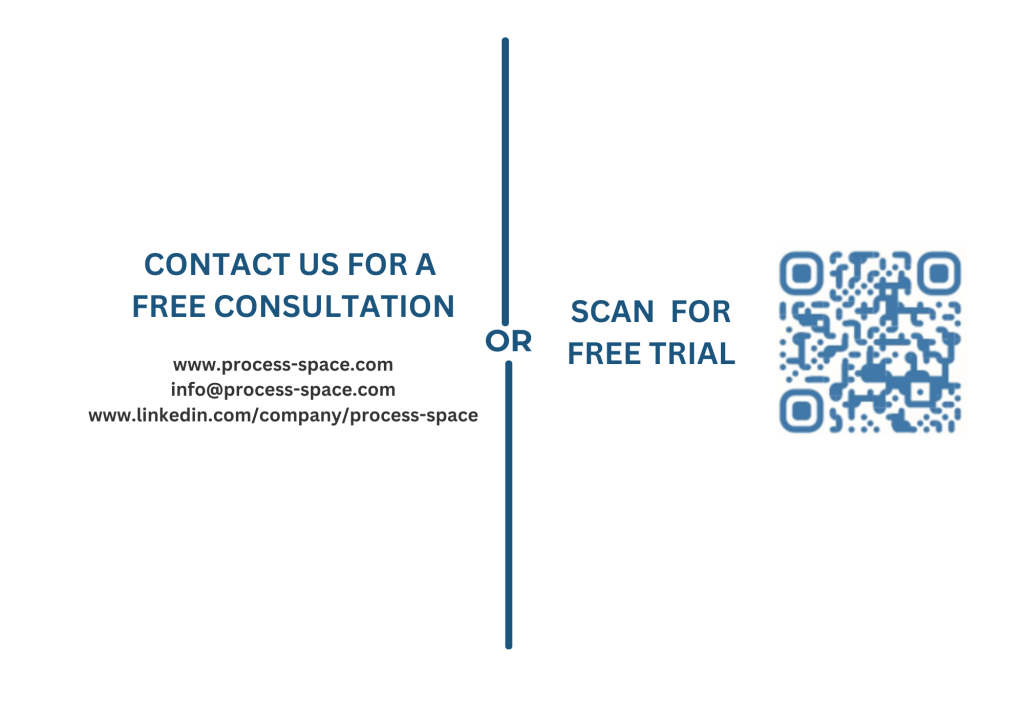We’ve been in countless conversations where companies proudly boast about how their processes are set, polished, and basically on autopilot. “We’ve got everything under control, no need to change a thing” we hear often.
We think that’s a dangerous position to be. If you think your systems and processes are perfect, you might already be losing.
Every second your business spends stuck in outdated processes is a second your competition is moving ahead. You might think things are running smoothly, but inefficiencies lurk in places you’ve stopped questioning. Most businesses leave money on the table without even realizing it.
The reality is that every single process can be improved. And if you aren’t constantly questioning how you do business, you’re likely stagnating. Worse yet, you’re probably wasting time, money, and opportunities.
Streamlining processes isn’t just about tidying up workflows—it’s about creating a faster, smarter, and more adaptable system to the demands of today’s market. If you still rely on old methods, you’re probably missing out on untapped savings and underutilized talent.
Tightening up your operations can do wonders for your bottom line:
1. Outdated Systems Breed Inefficiency
Just because something worked a year ago doesn’t mean it will work now. Market conditions change, and tech evolves. What used to take 10 steps might now take 3.
It’s easy to fall into the trap of thinking, “If it worked before, it’ll work forever.” But here’s the reality: yesterday’s solutions aren’t built for today’s problems. The systems and processes you’re using may have been cutting-edge when you implemented them, but what happens when technology leaps forward and your competitors start embracing faster, smarter ways to work? Suddenly, those old systems become roadblocks, slowing your team down and wasting resources.
- How much time does your team spend on manual data entry?
- How often do they jump between different platforms to complete a simple task?
What once seemed efficient now feels like a slog because it hasn’t kept pace with new technology.
Outdated processes aren’t just inefficient—they cost you opportunities.
Whether it’s missing out on faster customer response times, delaying product delivery, or making decisions based on incomplete data, these inefficiencies pile up fast.

Pro Tip: Audit your processes quarterly. Don’t wait until things are broken to fix them. Set aside time every three months to examine your workflows and ask yourself a few critical questions:
- How long does this process take from start to finish?
- Are there any steps we can automate?
- Can new tools or technologies replace outdated methods?
For example, if your team is still manually inputting data into spreadsheets, countless automation tools can handle that in seconds. If you spend too much time on approvals, look for systems that automate routine sign-offs. It’s not just about trimming the fat; it’s about giving your team the tools to focus on high-impact work.
2. Employee Burnout Creeps In
I worked with a client who thought their are running like clockwork. But behind the scenes, their employees were mentally checking out. Why? They were bogged down by tasks that should have been automated ages ago. The workload was heavier than needed, from manual data entry to redundant approval processes. What looked like a well-oiled machine on the outside was draining their team’s energy and creativity.
Burnout isn’t just about long hours or unrealistic deadlines. It can also stem from the frustration of working within inefficient systems.
Your team can be talented, motivated, and ready to make an impact, but if instead of focusing on the work that truly matters, they’re stuck doing the same repetitive tasks, jumping through hoops just to get basic things done, over time, that grind wears them down. Even the most engaged employees will disengage, not because they lack passion but because the tools they work with aren’t supporting them.
Burnout doesn’t just affect productivity—it affects retention. Employees who feel like wasting their time on mundane tasks won’t stick around. And once they’re gone, you’re left with turnover costs and the challenge of onboarding new hires into the same inefficient systems.

Pro Tip: Listen to your team. Often, your employees know exactly where the bottlenecks and inefficiencies are, but they’re too buried in their day-to-day work to sound the alarm. Hold regular feedback sessions where you ask these questions:
- What tasks feel repetitive or unnecessary?
- Are there processes that frustrate you or slow down your work?
- What would help you be more efficient and less stressed?
Once you identify the pain points, start looking for automation solutions. There’s no need to reinvent the wheel—there are tools out there for just about every repetitive task. Automating data entry, setting up approval workflows, or integrating different platforms lightens the load and frees up your team’s brainpower for higher-level work.
Happy employees are productive employees. Keep them engaged, and they’ll do their best work for you.
3. Innovation Demands It
The companies you admire for their innovation didn’t get there by luck. They got there because they’re constantly reassessing, refining, and streamlining their processes. They don’t wait for inefficiencies to pile up or for competitors to force their hand. They’re proactive, always looking for ways to stay ahead of the curve.
Innovation and process improvement go hand in hand.
You can’t create groundbreaking products, deliver exceptional customer experiences, or scale rapidly if your processes are clunky and outdated. The companies that win are the ones that recognize this early and make process optimization a core part of their strategy.
When was the last time you audited your processes?
If your answer is anything close to “I’m not sure” or “It’s been a while,” then guess what? You’re probably overdue. Think about it: while you’re sticking to old habits, the companies that are constantly innovating are finding new, more efficient ways to operate, and they’re lapping you in the process.
Innovation doesn’t just demand creativity—it demands efficiency. If your processes are slowing you down, your team won’t have the time or energy to focus on the big ideas that could drive your business forward.

Pro Tip: Make process audits part of your innovation strategy. Instead of viewing process optimization as a tedious, one-time task, integrate it into your ongoing strategy for growth. Here’s how to start:
Set a regular review schedule (quarterly or biannually) to reassess all your major processes. What worked six months ago may no longer be the best approach.
Encourage cross-team collaboration during the audit. Sometimes, the best innovations come from fresh perspectives. Invite team members from different departments to share their insights.
Look for external inspiration. Keep an eye on industry leaders and cutting-edge companies. What tools or methods do they use that you could adopt or adapt? Are there technologies out there that could make your processes leaner and faster?
Innovation isn’t just about creating the next big thing—it’s about constantly refining how you do everything. Every step to streamline your processes frees up resources, time, and brainpower for real innovation. And that’s how you stay ahead in a world that never stops moving forward.
4. Customer Expectations Change
Let’s face it: customers are impatient. If your processes can’t deliver that, you’re already losing business. Here’s a thought: Are your competitors outpacing you because they’re doing more with less?

In a world where everything is just a click away, customers’ patience has gone out the window.
We want faster service, better products, and a personalized experience that makes us feel understood—and we want it now. If your processes can’t keep up, you’re not just risking a bad review—you’re actively losing customers.
Customer expectations aren’t static—they evolve with every technological leap and market shift. What was considered “good enough” last year barely scratches today’s surface. Customers are constantly exposed to companies pushing the envelope, offering seamless, hyper-personalized interactions. So when they come to you, they expect the same, if not better.
Your competitors are outpacing you if they’ve figured out how to do more with less. Companies that invest in streamlining their processes deliver faster, more accurate, and personalized services because they’ve optimized everything behind the scenes. It’s not that they have a magic formula—they’ve just learned to adapt. And that adaptation keeps them ahead of the game.
If you’re relying on slow, manual processes or outdated systems, you’re not just falling behind—you’re handing over your market share to those who are quicker on their feet. When your competitors can onboard customers in half the time, respond to inquiries in minutes, or offer tailored recommendations instantly, you’ve got to ask yourself: how long can we afford to stay in second place?

Pro Tip: Automate for personalization and speed. The companies that win on customer experience are the ones that get two things right: they deliver fast, and they deliver personally. Here’s how you can catch up:
Embrace automation. Look at the repetitive tasks that slow down your customer service: manually inputting data and using spreadsheets to track customer inquiries… Automate those tasks so your team can focus on building genuine relationships with customers.
Use data to personalize. Customers expect you to know their preferences; data is your best friend. Use tools that collect and analyze customer interactions to offer tailored solutions before they even ask. Whether it’s personalized product recommendations or responding quickly to specific needs, the more customized you can make the experience, the more loyal your customers will be.
Speed is key. Review your customer journey from the moment they land on your website to the final transaction. Are there any unnecessary steps? Are there any bottlenecks? The faster and smoother you can make that journey, the happier and more loyal your customers will be.
Customer expectations are a moving target; only those agile enough to hit it consistently will thrive. By refining your processes, you’re setting yourself up to exceed those expectations and keep your customers coming back for more.
5. Costs Spiral When You Don’t
Inefficient processes directly affect your bottom line. Every clunky workflow, every manual task that could be automated, and every bottleneck that slows your team down is draining money from your wallet.
It’s not just about hard costs like labour hours or wasted materials; inefficiency seeps into every corner of your business. It drains employee productivity, increases errors, delays decision-making, and eats away growth opportunities. What might seem like a slight, everyday inefficiency can snowball into massive expenses over time. You might not feel the pain right away, but trust me, the cumulative effect will hit hard when figuring out why you’re running over budget or missing your revenue targets.
Time is money, and if your team takes five steps to complete a process that could be done in two, you’re burning time that could be spent elsewhere.

Pro Tip: Track the true cost of inefficiencies. It’s easy to overlook just how much inefficient processes are costing you because the impact isn’t always immediate or obvious. Here’s how to get a handle on it:
Conduct a time audit. Track how long it takes your team to complete routine tasks. You’d be surprised how many hours can be lost to outdated processes. Once you have a clear picture, compare it to industry benchmarks or look for automation tools to reduce that time.
Identify your most significant cost drivers. Look for the processes that involve the most manual labour, resources, or time. These are the ones that are likely costing you the most in terms of both direct expenses and lost opportunities. Start with these areas when you look to streamline.
Measure opportunity costs. Think about what your team could do with the time saved from eliminating inefficiencies. Whether it’s focusing on new business opportunities, improving customer service, or increasing sales efforts, there’s always a cost to doing things the hard way.
Inefficiency is a silent killer for profitability.
It may not be glaringly obvious at first, but those hidden costs add up fast, slowly reducing your ability to stay competitive.
Streamline your processes now and stop wasting valuable time and money on things that could—and should—be done better, faster, and cheaper.
Still think you’ve got it all figured out? It’s easy to get comfortable with the familiar, but comfort rarely leads to success.
Take 15 minutes to map out one process in your business right now. Then, ask yourself: is this still the best way?
Start your 30 days FREE trial to the Process Space®Platform to easily map it out.
Let us know what you found – book a FREE consultation and we’ll help you spot what can be improved.

